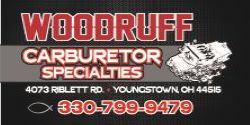Dibbons
Well-Known Member
- Local time
- 6:21 AM
- Joined
- Nov 29, 2014
- Messages
- 5,081
- Reaction score
- 6,109
- Location
- La Paz, B.C.S., Mexico
Back in the 1970's I remember re-torquing the steel shim head gaskets on a 273 build after the first cool down period after breaking in the camshaft. I did not loosen the bolts, only re-torqued them as they were.
I read online today that when re-torquing, the bolt should first be backed off a bit.
Not sure what is best. Probably boils down to who you talk to.

I read online today that when re-torquing, the bolt should first be backed off a bit.
Not sure what is best. Probably boils down to who you talk to.

















